Have you recently wandered into your herb garden to grab some parsley and noticed it is looking a tad on the droopy side? Or have you noticed your parsley is beginning to die? You may be left wondering how you have managed to kill a famously easy-to-grow herb. Parsley can die for several reasons, read on to find out more.
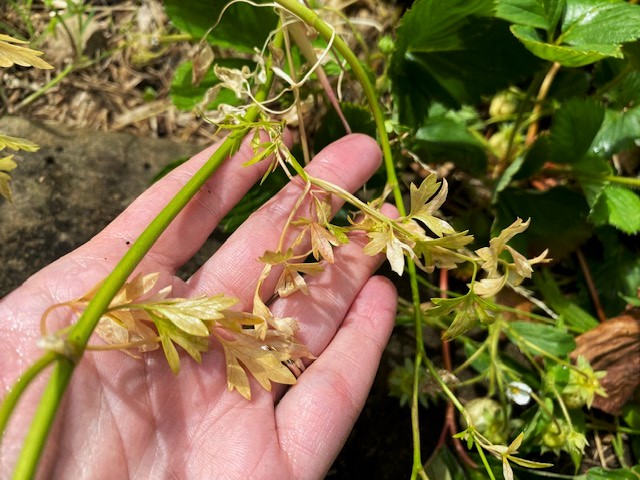
Table of Contents
Why is My Parsley Dying?
The most common causes of parsley dying are lack of sunlight, the temperature is too hot, watering problems, insufficient soil nutrients, certain pests, and diseases.
Common parsley pests are aphids, carrot root flies, and cutworms. Diseases such as septoria leaf spot, and powdery mildew are all common parsley killers.
Let’s look into each cause and how you can fix it for a thriving parsley plant you can harvest again and again.
1. Lack of Sunlight
Parsley (Petroselinum crispum) is classed as a hardy herb, but that does not mean you can plant it anywhere in your herb garden. If you notice the leaves of your parsley plant are starting to wilt, have become spindly, and stopped growing, your parsley needs more sun.
Lack of sunlight will kill your plant because it will be unable to photosynthesize which means it will not get sufficient energy to grow. This leafy herb needs between 6 and 8 hours of sunlight per day to grow happily.
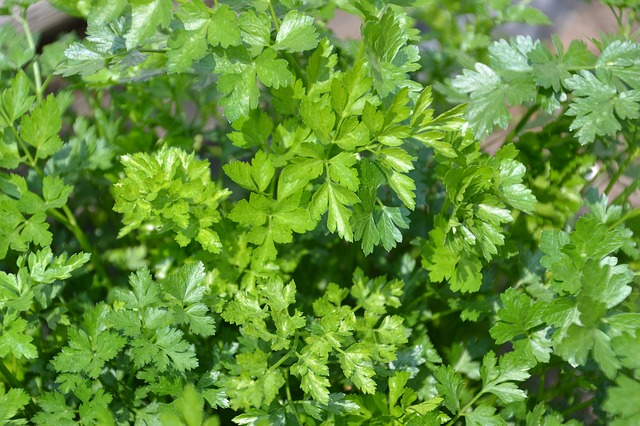
Make sure to plant your parsley in a location that receives the correct amount of sunlight. If your garden does not get enough sunlight during each season, don’t panic.
For best results, keep your parsley potted and move it around your herb garden according to sun exposure each season.
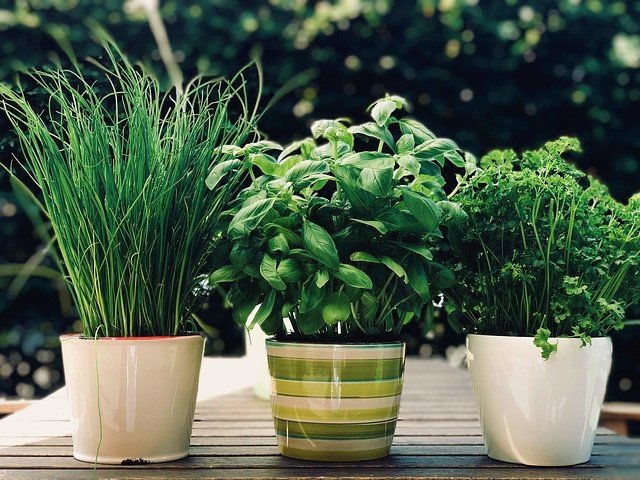
2. Too Hot To Grow Parsley
In the same way that too little sunlight can cause your parsley to die, growing parsley in the heat of summer can have the same effect. If your parsley plant is grown in temperatures heading above 90 °F (32 °C), the plant will become stressed and dehydrated.

If your parsley stems and leaves start to droop and become limp, generally looking like they are about to die, too much sun and hot conditions could be the problem. Your plant’s leaves may start to look scrunched and slightly burnt at the edges. This is from too much sun and heat.
Higher temperatures will also cause parsley to bolt; flower and setting seed to finish its life cycle.
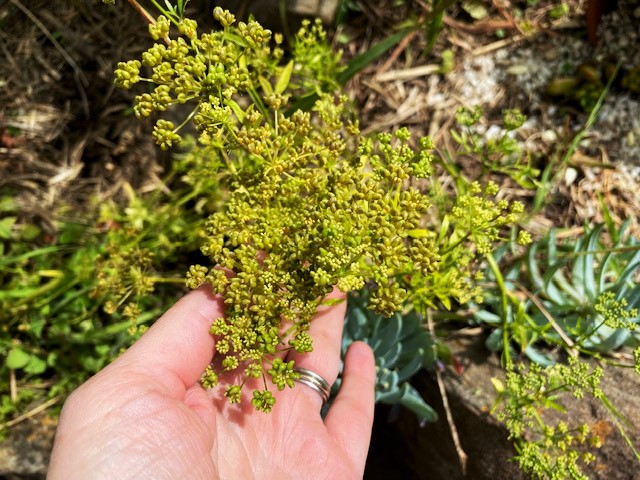
Keeping your parsley well watered and out of direct sunlight during hotter weather, will help solve the problem as well as planting in the ideal growing temperature of between 50-70 °F (10-21 °C).
In my temperate climate, parsley grows best in the cooler months of fall through spring. So depending on your climate, plant parsley when you know the conditions will be favorable for parsley to really thrive.
3. Watering Problems
Too Much Water
Parsley will thrive in moist conditions and well-drained soil. Watering issues are the most common cause of dead parsley plants. Parsley holds a lot of water in its leaves, making it very easy to overwater. If you notice the leaves of your parsley are beginning to turn yellow and wilt, you may have a moisture issue.
If your parsley plant has been overwatered, or your soil has drainage issues, the plant may develop root rot. This harmful and irreversible condition is caused by a fungus that lives in the soil. The fungus thrives in warm and damp conditions, which can be triggered by overwatering.
If your parsley plant is dying, and you have noticed a wispy gray mold forming at the base of the plant, you have root rot. Sadly, once root rot has started it can not be remedied.
It is really easy to overwater your herbs, I once killed a few parsley plants from overwatering because I didn’t factor in the amount of rainfall we had received.
If you have not overwatered your plant but it is still showing signs of overwatering, it is more than likely an issue with the drainage of your soil. The best thing to do if this is the case is to transplant your parsley either to a container or to a section of the garden where you are confident the soil drains correctly.
It’s important to remember to adjust your watering volumes according to the seasons. Your parsley plant won’t need to be watered as much during the cooler months. It will need extra water during the warmer months. A general rule of thumb is to check the moisture of your soil. If it is still damp, you don’t need to water it.
Not Enough Water
Overwatered and underwatered parsley both present in the same manner, making it difficult to tell which is causing your plant to die. If your plant is dying due to lack of water, you will notice when touched, the curly leaves of your herb are dryer than usual. Additionally, the leaves may begin to turn yellow from the edges.
During the warmer months, it is recommended that you check your soil moisture levels daily. If the soil is dry, you will need to water your parsley.
4. Insufficient Soil Nutrients
Parsley, like many plants found within your garden, needs more nutrients than your soil can provide. If your dying parsley presents with white spots on the leaves and is beginning to wilt your plant is not getting enough nutrients.
Luckily this is easy to fix. You should fertilize your parsley at least once a month, using any kind of seaweed-based fertilizer. If you are worried about over-fertilizing your soil, (which would kill your plant too), then I would recommend testing your soil. Checking your soil nutrient levels will ensure you don’t over or under-fertilize your plants.
The soil testing kit will check the levels of nitrogen, phosphorus, and potassium. Parsley likes a ratio of 3-1-2, or an even 1-1-1. A seaweed-based fertilizer will provide the correct amount of nutrients. I also like to use an organic herb fertilizer like this one to make sure the soil has all the nutrients it need to provide parsley with the right conditions.
5. Pests
Aphids
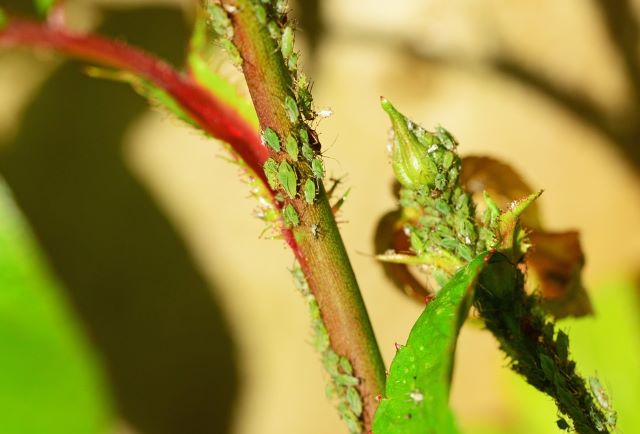
The blight of home gardeners everywhere, aphids could be the culprit behind your dying parsley plants. The Willow-carrot aphid is particularly partial to parsley plants. Aphids are small soft-bodied insects that are usually pale green, or yellow. They like to congregate on the underside of leaves and stems.
An aphid infestation will cause your parsley plant’s growth to be stunned. Additionally, the plant’s leaves will start to turn yellow and develop black necrotic spots. Aphids can also cause mold to grow on plants because they leave a sweet and sticky secretion on the plant called honeydew.
If you notice these little pests on your herb, a quick blast of cold water from the garden hose should shake them free. One thing that I have found works wonders for an aphid infestation is, spraying your plants with a mixture of water and washing up liquid.
It is best to spray them with the hose before you spray them with the washing-up liquid mixture, to get rid of as many as possible first.
Carrot Root Fly
Carrot root fly affects parsley because of its relation to carrots and parsnips. This pest kills your parsley plant by eating its roots. The carrot root fly lays its eggs in the soil beneath your plant. Once hatched, the 1cm creamy white maggot begins feasting on the tiny root hairs of your parsley plant.
Once the larvae have eaten the fine hairs, they consume the rest of the plant’s roots. The damage caused by carrot root fly maggots will kill your parsley. If you have found these pesky maggots in the soil around your dead parsley plants, you can get rid of them with a mixture of 35% hydrogen peroxide and water.
The ratio of which is 1-10. Once mixed, water the soil around your plants with this mixture. The mixture once in the soil transforms into water and oxygen, killing the larvae.
Cutworms
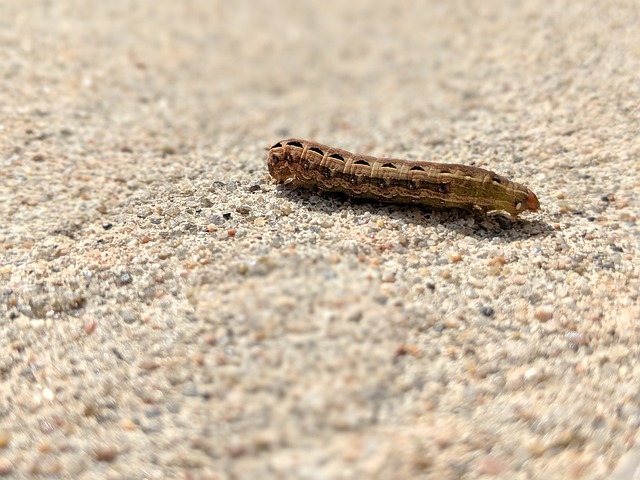
It may be this nocturnal garden dweller that is causing your parsley to die. The brownish-green caterpillars feed on the stems of your plants in the soil below. Having cutworms in your garden will result in snapped stems on your young parsley plants.
If you have a cutworm problem, you can remove the worms by hand at night time. Spreading diatomaceous earth around your plants will form a barrier that the cutworms cannot cross.
To protect your plants against cutworms, you can add a protective barrier around your plant’s stems. This can be made from plastic (such as a plastic cup) or foil. You would need to place the barrier around the stem for at least 3 inches above the ground, and one inch below.
6. Disease
Septoria Leaf Spot
Septoria leaf spot is a common viral infection that can kill your parsley plants. Symptoms of the Septoria leaf spot include small gray/brown spots, with reddish-brown margins on the leaves of the plant. These necrotic spots may sprout tiny black fungi in the middle.
This viral infection spreads through infected seeds, contaminated water, and contaminated equipment. To avoid this infection, use pathogen-free seeds or you can treat the seeds with a fungicide. You must sterilize your garden equipment after use and destroy the infected plants.
Powdery Mildew
If you notice a powdery growth on the leaves or stalks of your dying parsley plant, then your plant is infected with a fungus. The powdery mildew fungus commonly occurs in gardens with humid conditions.
In addition to causing the growth of powdery mildew on your plant, the fungus will cause the parsley plant’s leaves to turn yellow and crinkle. It will eventually kill your plant. Once the fungus produces spores, it is spread to the rest of your parsley crop through the air.
To avoid powdery mildew outbreaks, avoid over-fertilization. The fungus loves shade, so make sure you plant your parsley in an area that gets more direct sunlight than shade and try this Milk Spray Recipe For Powdery Mildew (Natural Fungicide for Plants).
Further Reading:
- Growing Parsley: Planting, Harvesting and Storing Parsley
- Stop Struggling with Deformed Parsnips: 8 Causes & Solutions
- Are Carrots a Fruit or a Vegetable? Answered!
- How To Grow Dill For An Abundant Harvest From Your Edible Garden
- What To Do With Celery Leaves (Preserving and Recipe Ideas)
- A Twisted Tale: 8 Causes of Deformed Carrots with Solutions
